Title : Use of infrared thermography as a tool to monitor skin temperature in equine veterinary medicine and physiography
Abstract:
Infrared thermography (IRT) is a non-invasive diagnostic technique that records and visualizes the infrared radiation emitted by the body surface, mapping temperature distribution patterns that can indicate physiological or pathological changes. Since its introduction to equine veterinary medicine in the 1960s, IRT has been utilized to monitor health and performance by identifying inflammatory, vascular, and neurological abnormalities. Common applications in equine practice include diagnosing limb injuries, such as tendinopathy, laminitis, and joints inflammation, as well as assessing back conditions related to the spinous process inflammation of the thoracic and lumbar vertebrae. As IRT can detect subclinical inflammation, it is valuable in identifying injury before clinical symptoms appear, thus preventing the horse from serious injury. IRT can play a role in equine rehabilitation for monitoring inflammation regression, assessing anti-inflammatory treatments, and guiding rehabilitation processes. It indicates the area at which physiotherapy treatment should be applied. It has been also used to assess effectiveness of massage treatment and physical devices including laser, shock wave therapy, magnetotherapy and pulsed electromagnetic field.
To maximize diagnostic accuracy, IRT requires a controlled environment with constant ambient temperature in the absence of air drafts and sheltered from the sunlight. However, its specificity and sensitivity remain limited, often necessitating its use as a complementary diagnostic method alongside other imaging modalities. Despite these limitations, IRT has proven to be valuable in veterinary medicine and physiotherapy. Future research involving larger sample sizes and long-term follow-up is needed to enhance its diagnostic reliability and reproducibility, solidifying its role in equine healthcare and performance management.



